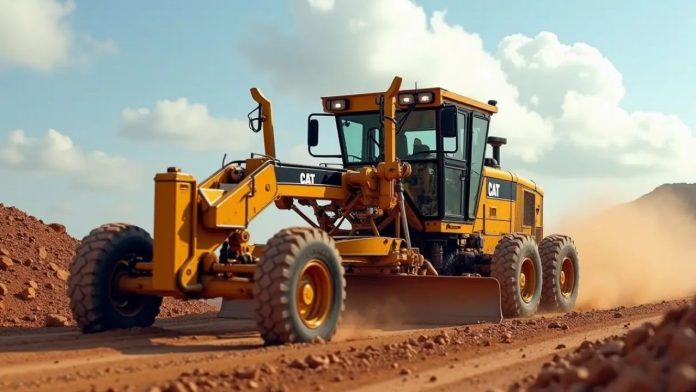In modern construction and road development, one of the most imperative choices that will make or break a project is the kind of machinery to be used. The grader machine is one of the many types of heavy equipment in use today and is instrumental in creating accuracy and smoothness in leveling surfaces. It can be a road construction grader, a foundation grader, or a gravel path grader, but in whatever the case, a motor grader is engineered to provide high precision in both gauging and shaping surfaces. The choice of the most appropriate grader involves not only the buying of strong machinery but also the awareness of project requirements, geography, and performance requirements.
Role and Use of a Motor Grader
A motor grader is a heavy equipment that is used to produce a flat area when grading. It has a long adjustable blade that can be adjusted and fixed at different angles to spread level and contour surfaces in a very precise manner. This flexibility allows its invaluable use in the construction of roads, mines and extensive landscaping operations. Graders could also be used to level, ditch, snow and shape the land on the field, which shows that they are versatile. One should be aware of how this machine can assist in operational efficiency to enable the project managers to make better choices regarding which one to choose.
Defining the Project Requirements
The initial requirement when selecting the appropriate motor grader is first to define 20 the needs of the project. The area of work, the nature of the material that has to be graded, and the maximum level of precision to be achieved should all be taken into consideration. Examples include heavy-duty horsepower graders and sophisticated hydraulic systems needed in large-scale infrastructure projects like highways or airports. Compact graders can effectively work on smaller projects like farm roads or residential driveways. By defining these parameters, we will be able to determine the best performance level that the chosen grader will offer without breaking the budget.
Assessing Engine Power and Performance
An important determinant of motor grader performance is engine power. The horsepower of the machine dictates its capacity to work the steep gradients, heavy loads and also long durations. Graders are usually between 100 and 250 horsepower, but the higher-priced models are used in heavy and large-scale operations. Besides power, fuel economy, and emissions requirements are to be considered as well. Modern graders have also advanced to have environmentally friendly engines that consume less fuel and comply with international environmental standards, delivering both performance and sustainability.
Blade Control and Configuration Systems
The blade is the core of any motor grader, and it is important to know how such a blade should be configured. The width of the blade, the range of angles, and the mechanism used to control the blade define its efficiency in doing grading work. Graders have now developed to include automated control systems that employ the use of GPS or laser technology to attain the highest level of accuracy in grading.
Service Availability and Maintenance
Maintenance and service support are other important factors to keep in mind. Maintenance should be done regularly to maintain a motor grader in the best operating condition. One must make sure that spares, technical support, and service facilities are readily available before making a purchase or renting. Using a supplier and brand that offer a good network of after-sales services reduces downtimes and provides longevity of the equipment.
Budget and Cost Efficiency
Although the initial cost of purchase is a critical consideration, cost efficiency over the long term should not be ignored. A motor grader that consumes less fuel and requires minimal maintenance with a long operational life can be very cost-effective in the long run. When a project has a limited budget, it may be considered to use a high-quality used grader as an alternative, as long as it is well inspected and maintained.
Conclusion
The selection of an appropriate motor grader is a tactical decision. Move that directly influences the success, quality and cost-effectiveness of any construction project. It is possible to find the ideal match to their needs by critically evaluating other parameters like the size of the project, engine power & blade technology, comfort to the operator and support in maintenance. When chosen correctly and used correctly, the grader machine not only does wonders to boost productivity but also makes each and every surface leveled with such precision that there has never been any match. Finally, a well-educated investment in the right grader results in easier work, fewer project delays, and better construction results, making it a necessary weapon in the arsenal of the future of modern infrastructure development.







